Everything to do with the original aborigine culture of the Canary Islands is shrouded in mystery. As in many other cases, the only real facts that we have about the past are those reflected in the surviving chronicles, but even these do not throw much light on the people who inhabited the various islands before their final conquest by the Crown of Castile.
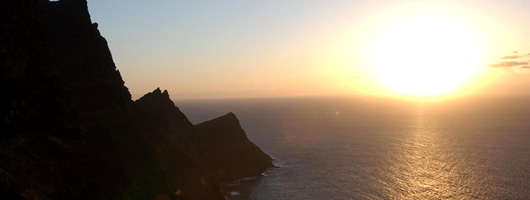
We must remember, of course, that when the first conquering seafarers alighted upon the Canary Islands and Gran Canaria, they considered these to be at the end of the world as it was known at the time, on the furthest ventured outskirts of the Ocean. The Archipelago brought the launching of the expeditions of Columbus in search of the New World and opened up the crude warfare between the various monarchs of the times in Europe for the control of lands beyond their continent.
The aborigine natives of Gran Canaria were quite oblivious to what was going on in the rest of the world. This community lived off the land. Their God was Acorán and their society was organized into groups of nobles at the orders of a Guanarteme. Not only did they cultivate the fruits of the earth but they also fished and tended livestock. But their main activity was agriculture that produced barley as their staple foodstuff, which was ground and toasted into the shape of “gofio”, often eaten with broad or fava beans and wheat.
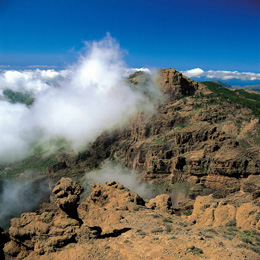
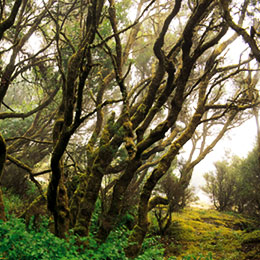
One place you simply should not miss nowadays on your visit Gran Canaria is the Cenobio de Valerón, a type of giant grain store, hidden away in caves, perched on the top of an immense gulley. At times when it was common for marauders and pirates to land and raze crops to the ground, so the native islanders cleverly hid their stocks out of sight and reach, in inaccessible places like the Cenobio.
The native aborigines settled in large semi-urban structured communities. One fine example of how they lived can be viewed in the Archaeological Excavation Site at La Cueva Pintada de Gáldar. They also lived in caves or round dwellings dug into the earth built with stone and with wooden roofs.
Their society was very strict and hierarchical. The nobles who inherited their titles directed the economy and controlled land and livestock. The Guanarteme governed over them all together with the religious leader, the Faycán, responsible for all the religious rites. The Harimaguadas were also important in the religious sphere. These were noble women, expressly educated to these ends from childhood and who shared the responsibilities of the Faycán.
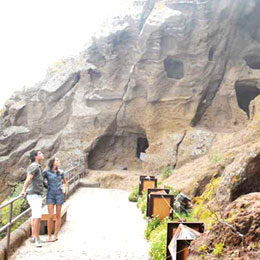
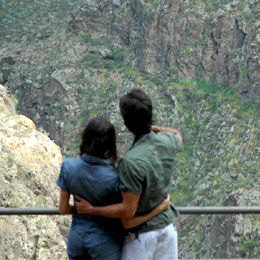
The original islanders also devoted time to arts and crafts. Many of the traditional techniques used by them still survive today. In those days all dishes were fashioned out of clay, as were the religious idols, such as the famous “Ídolo de Tara”. They also did basketwork, stonework and woodwork. They made knives, span thread and decorated the walls of their caves and their clay seals known as “pintaderas” with geometric figures. The Cueva Pintada de Gáldar is a magnificent example of native aborigine painting. The handicraft of today is based on the lengthy list of traditional crafts passed down over the generations.
It is easy to find aborigine art in the Canary Islands, in the geometric motifs, squares, triangles and circles painted in reddish, ochre tones and white. The original Canary islanders have left their mark, albeit with a halo of mystery and a sprinkling of legends, but this little community cut off from the rest of the world in a haven of Nature has made a big ripple in the pool.
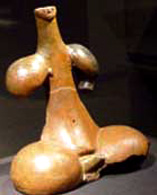
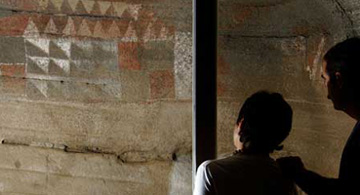
The links from Past to Present are numerous and deep-rooted: handicrafts, native sports, earthenware decoration and paintings, imitated even on the pavements and street signs... these are links back to the first islanders who walked the gullies and climbed the mountains we know so well, back in the days of our forefathers and ancestors, who are permanently shrouded in mystery.
Take a journey right back in time thanks to the web of the Canary Museum: www.elmuseocanario.com